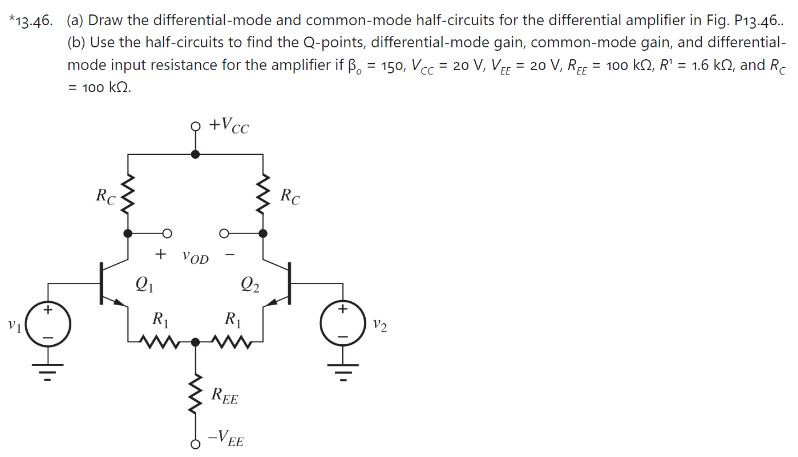*13.46. (a) Draw the differential-mode and common-mode half-circuits for the differential amplifier in Fig. P13.46. . (b) Use the half-circuits to find the Q-points, differential-mode gain, common-mode gain, and differential-mode input resistance for the amplifier if β0 = 150, VCC = 20 V, VEE = 20 V, REE = 100 kΩ, R1 = 1.6 kΩ, and RC = 100 kΩ.



You'll get a detailed, step-by-step and expert verified solution.
 Work With Experts to Reach at Correct Answers
Work With Experts to Reach at Correct Answers